Roundup Report -- Piceance East Douglas, 2022 [Part 1]
TCF Board Member Linda Hanick has been advocating for wild horses and observing roundups for decades. She and TCF Founder Ginger Kathrens were in the field at the Piceance East Douglas Roundup last week. Here is her report.
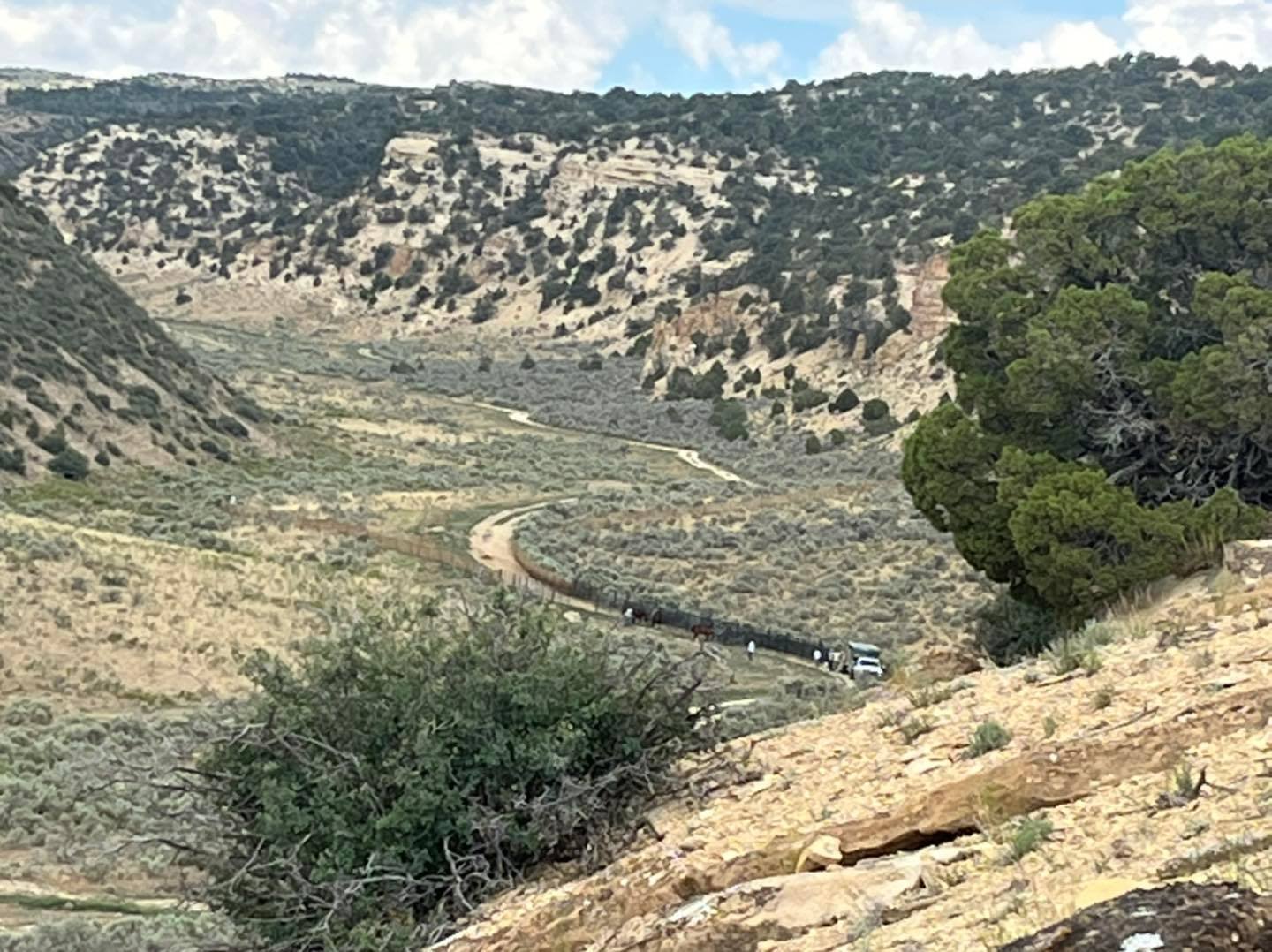
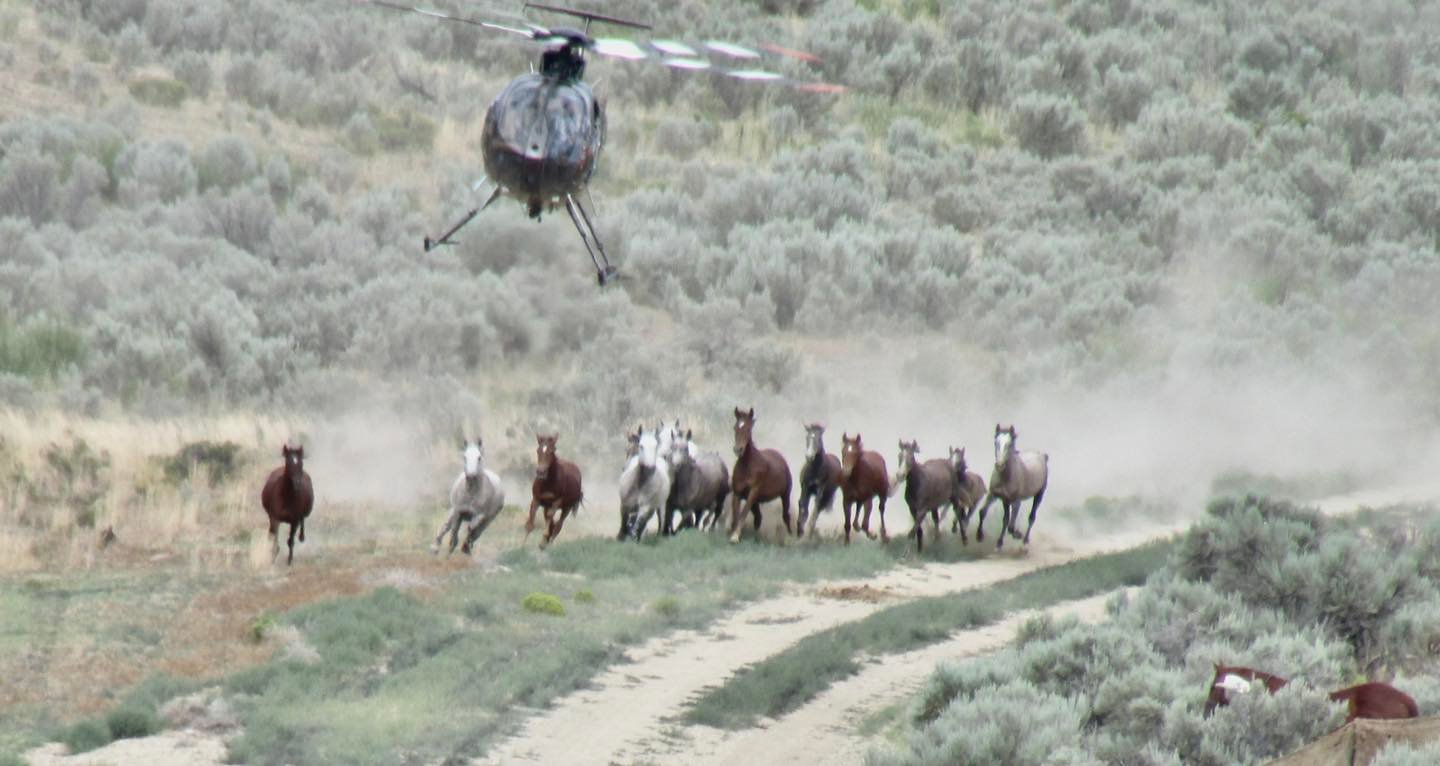
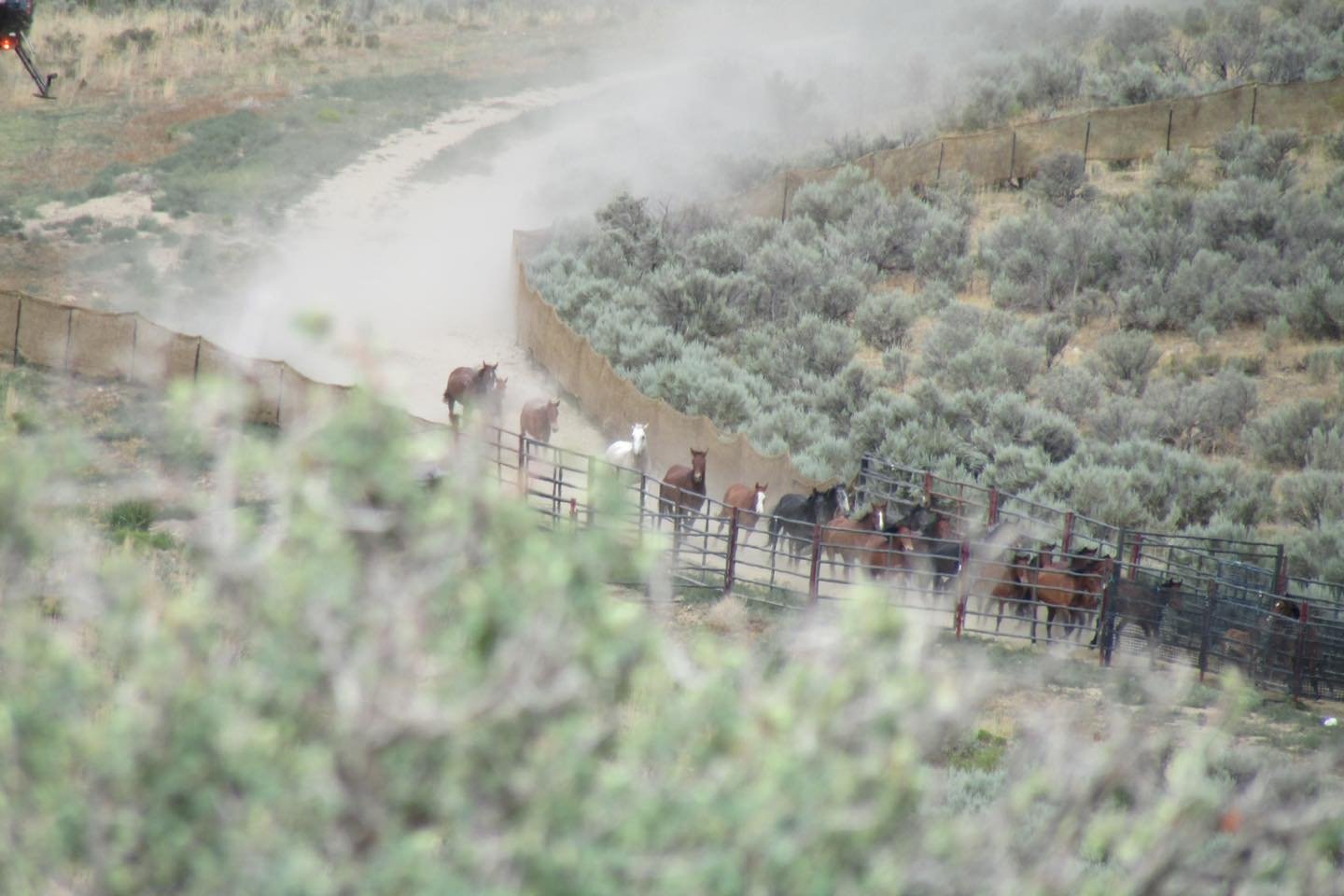
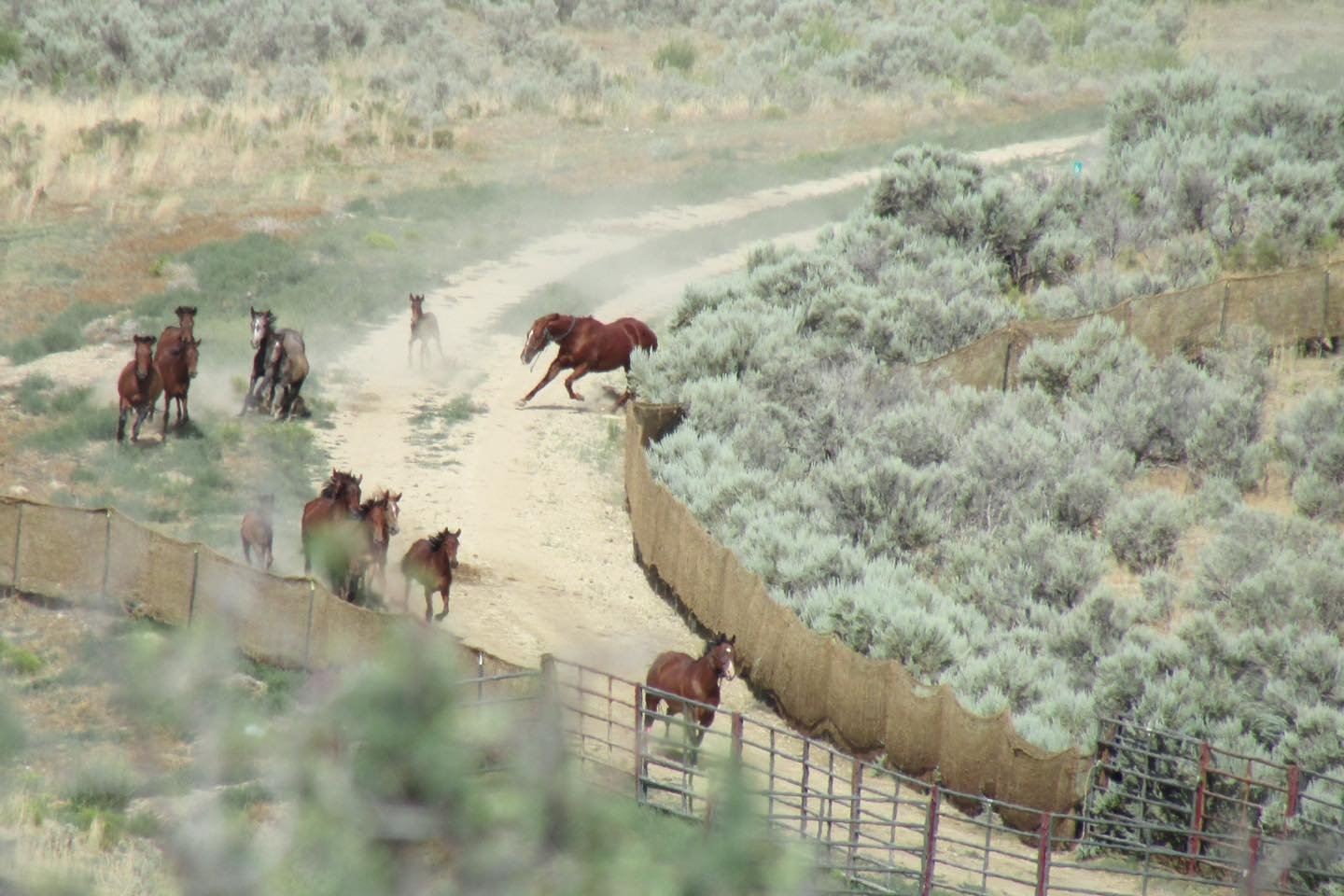
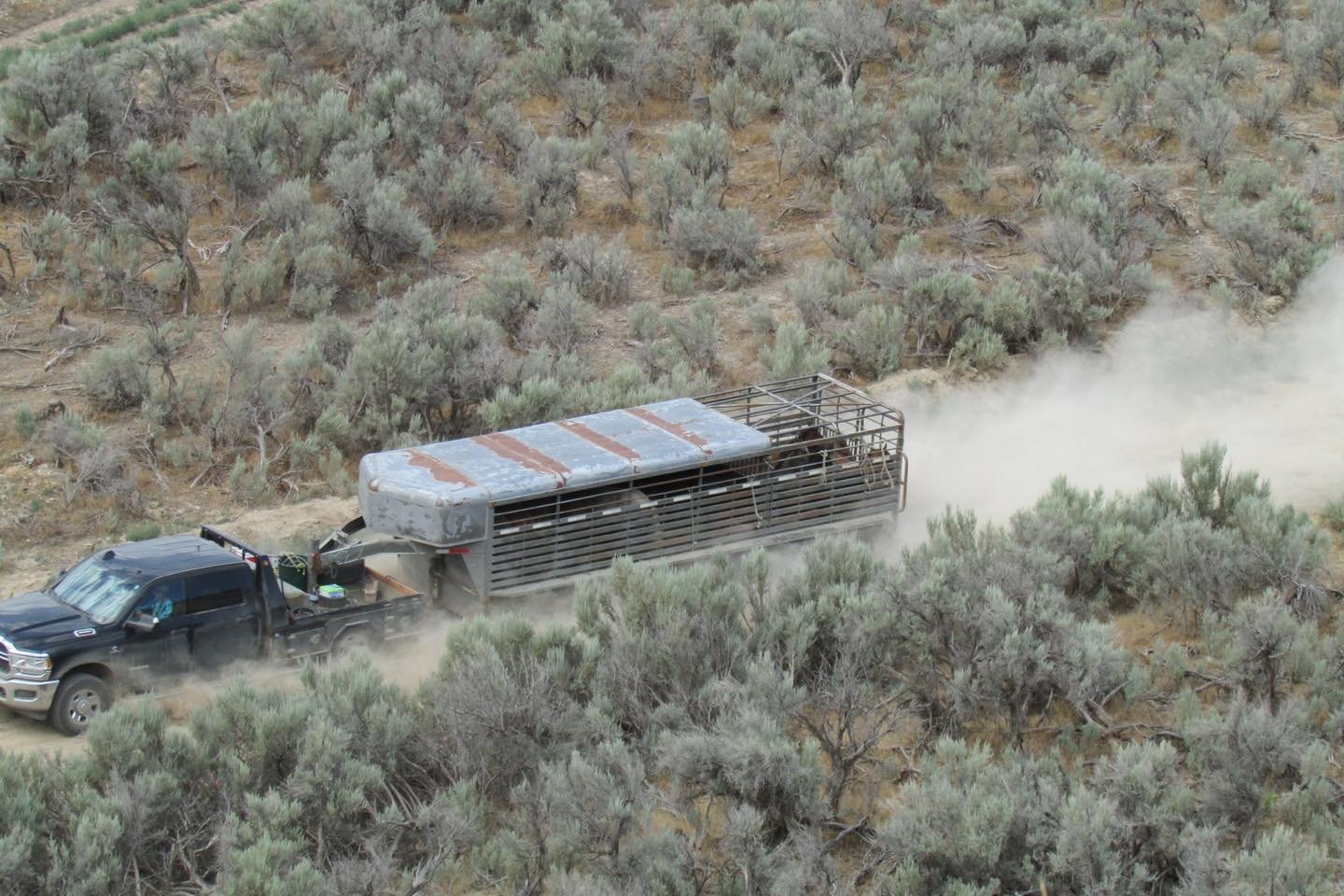
I was an observer as a board member of The Cloud Foundation at this roundup last week and have some observations to share. I have been an observer at many roundups in MT, WY, and CO (including 2 previous ones at East Douglas/Piceance):
EAST DOUGLAS/ PICEANCE ROUNDUP—PART I
Ginger Kathrens & I attended this Colorado roundup last week. If you haven’t witnessed a roundup, this narrative will help you understand the sights and sounds of what occurs. We met the BLM at dawn west of Meeker and followed them into the HMA where the day’s roundup was to take place.
But first — We don’t use the euphemisms that the BLM uses to sugar coat these events.
It’s a ROUNDUP (not a gather). It’s a JUDAS Horse (not a prada horse), and horses with pre-existing conditions are KILLED, not euthanized.
Our destination July 22nd was Greasewood Gulch (84 Road). BLM has also worked Pinto Mesa & 84 Mesa in the past week. When we parked the cars, we were ¼ mile from the trap site, but to have a view of the trap, we were told to climb a steep rocky mountainside. To describe this climb as dangerous is a gross understatement, and footing was precarious both up and down.
Observers numbered 5 people—TCF, Ginger Fedak from In Defense of Animals, & a CBS DENVER news team. There were about 10 BLM people there from the local Meeker office, the Craig office, and the Denver state office.
There was NO wild horse and burro specialist on site, but we were told there was a BLM veterinarian at the trap. We could see the trap about 1/4 mile away, but not the horses inside the trap. Were there injuries? What was their respiration rate?
We could see the helicopter bring them in that last ¼ mile, but we don’t know how far he had pushed them or how fast and close he pushed them up to that point — 1 mile or 5 or 10 miles?
When we asked about seeing the horses at day’s end, we were told they were on private land and the land owner didn’t want the liability of people being there. Neither of us has ever been denied the access to the horses after they were rounded up.
The first indication of horses coming in is the “whump, whump” sound and vibration of the helicopter rotor blades.Then we see a dust cloud on the road before any horses. The helicopter then appears, popping out from behind the hillside on the left, the horses are headed toward the trap, and the 2 Judas horses are released—one from each side of the road as the horses approach the trap. Once in the trap, they are sorted into stallions, mares, and foals and loaded into the trucks in that order.
The only time we can hear them is when they drive out in trailers below us, and the foals are calling out to their moms.
683 horses have been rounded up, BLM will return 200 (when they reach 1000). 2 horses have been killed — due to “pre-existing conditions.”
(Stay tuned for part 2)
Here are the facts —
The Greasewood Road, where we drove to the observation site, was horribly rutted and difficult to navigate, even with a 4WD off road vehicle. Normally the BLM would take the time to grade roads and smooth them out, so trailer loads of traumatized horses would not have to fight for their balance and footing--particularly the young foals--when they are hauled out. This is standard procedure by BLM offices that take the care of the horses seriously during a roundup. These are traumatized horses who have been chased by a big loud bird (helicopter) in 90 degree heat, loaded into a strange vehicle, and pulled across this horrible road trying to keep their footing. It's a telling observation regarding how they view the welfare of these wild animals.
Our observation site allowed us to see the horses being driven in but they were a 1/4 mile away. We could not hear them, could not see what their respiration rate was, nor could we see if there were injuries, etc. We were perched dangerously on the side of a steep rocky hill with loose rocks.
I observed careful behavior on the part of the Cattoor Livestock's helicopter pilot in bringing the horses to the trap. The helicopter flew behind the group, did not push them, backed off at times, and displayed excellent knowledge on wild horse behavior. They did a good job, and I have observed some horrible roundups with deaths, injuries, broken legs, and lack of care for the animals.
I have always been allowed to observe the removed horses at the end of the day, walking around the temporary corrals to take photos. The temporary corrals in this roundup were situated on private property, so we were not allowed to go there because the owner of the private property "didn't want liability responsibilities." BLM has 190,000 acres in East Douglas/Piceance--surely they could find a few acres to accommodate temporary horse corrals on public land so the public can see what is going on. This total lack of transparency, not allowing observers to see the horses, is another reason why there is ongoing distrust of BLM. I have never been barred from observing the horses at the end of the day. What are they hiding? (And I have observed 2 previous East Douglas/Piceance roundups.)
When this roundup was announced, BLM emphasized that this herd was malnourished and needed human intervention to save them from a horrible death with an emergency roundup. It's quite apparent that these horses are well-fed, healthy, sleek, and not malnourished in any way. The "malnourished" excuse was merely a ruse to remove 800 horses. I can't count the number of times that "emergency roundup" has been the excuse to remove horses in the past. Attached photos show the excellent condition of the East Douglas horses when we later drove through the Herd Management Area looking for horses that were left.
BLM plans to return a paltry 200 horses to 190,000 acres after they are finished, but not before they treat them with a potentially sterilizing drug called GonaCon. GonaCon blocks the production of sex hormones in mares and stallions. In the BLM study, only 30% of mares returned to fertility 10 years after receiving 2 injections. This is a big step towards the extinction of this herd, if there is no breeding. It also will alter the wild behavior of these animals, and they will become much like a pasture full of domestic horses.
BLM is adamant about wiping out this uniquely historic herd because of pressure by the agricultural community who want to graze the land at welfare ranching rates--$1.35 per cow/calf pair per month-- instead of using their own land. BLM contends these horses are nothing special--just domestic horses that were released by ranchers. Historic documentation shows this is not the case.
December 25, 1776, two Spanish Explorer/Priests, Escalante and Dominguez, documented in their diary they found horses in the Douglas Creek area near their campsite. This is the oldest documentation of wild horses in the US and they are right here in western Colorado. Their uniqueness must be preserved.
The BLM is focused on eliminating the East Douglas horses, not managing them as a protected species.
Linda Hanick, Board of Directors, The Cloud Foundation
Government gets away with these actions because they operate unseen by the majority of Americans.
TCF is dedicated to raising public awareness for wild horses and burros. Please consider donating to keep our observers in the field, bringing these injustices to light.
